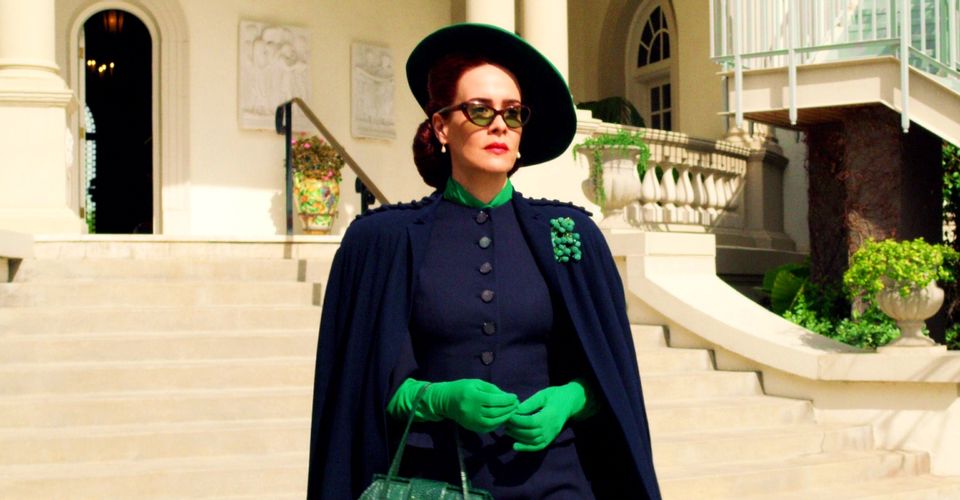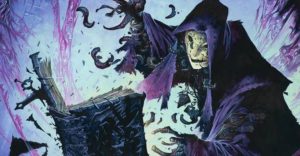Ratched: Why Mildred Not Being The Show’s Villain Is The Smartest Move Yet

WARNING: Spoilers for Ratched season 1
Sarah Paulson’s portrayal of Nurse Mildred Ratched in Ryan Murphy’s 2020 series for Netflix, Ratched, highlights a different side of one of fiction’s most iconic villains, and the show is careful not to make her the primary villain—yet.
Ken Kesey’s 1962 novel, One Flew Over The Cuckoo’s Nest, was adapted for the screen by director Miloš Forman in 1975. The cast of the movie adaptation of One Flew Over The Cuckoo’s Nest starred Jack Nicholson as Randle Patrick McMurphy, a man who is committed to a psychiatric hospital in Oregon and ends up going toe to toe with Nurse Ratched, who rules the hospital with an iron fist. Portrayed by Louise Fletcher—who won an Academy Award for the role—Ratched was not a sympathetic character in the movie or the book, but as the primary events of each were centralized around the events at the hospital, she was never given much background. Instead, Kesey and Forman’s narratives focused on the male characters, leaving audiences to wonder about why Ratched was so awful.
Murphy answered that question, to an extent, in Ratched season 1. Functioning as an origin story for the character of Mildred Ratched, Paulson’s portrayal of the woman who will eventually become the icy, no-nonsense administrative nurse who squares off with McMurphy, possibly her greatest challenge to date, is a more sympathetic one. While it’s important to allow villains to come into their own and not lessen their downward slide into darkness, as villains are often just as important as a story’s heroes, it’s also important to understand the motivation behind their actions. It’s a careful balance that’s only beginning, as Ratched has been renewed for season 2 by Netflix. However, Ratched season 1 intelligently gives its audience reasons to empathize with Mildred as a woman, a sister, a lover, and a victim of a patriarchal society during the late 1940s.

In Ratched season 1, Mildred ambitiously works her way to the top, earning the head nurse position at a hospital under Dr. Hanover (Jon Jon Briones), who is working to streamline his technique with the transorbital lobotomy and believes—as Mildred does—that the mentally ill can be cured. It’s a more humanist belief system than one might expect from a character who, in Forman’s movie, is less compassionate to those under her care. This softer side of Mildred, the audience learns, is prompted by her foster brother Edmund Tolleson (Finn Wittrock), a serial killer who is up for the death penalty. Edmund’s story is equally sympathetic; he sought out the priest who had sexually assaulted his mother for revenge.
While Mildred is clearly predisposed to wickedness, as is proven when she lobotomizes an innocent priest to ensure he can’t testify against her brother, she’s not fully lost herself to it yet. Most of the evil deeds she carries out in Ratched season 1 are reactionary, a way to protect herself or others, as she believes that by achieving status at the hospital, she might be able to stay her brother’s execution and even cure his illness completely. Later in Ratched season 1, it’s revealed that Mildred and Edmund were forced to perform sexual acts on each other in front of a live audience at their foster parents’ behest. Prior to that, they had endured other acts of physical abuse from foster parents in different homes, and therefore were always protective of each other.
Mildred’s sexuality, which develops when she falls in love with Gwendolyn Briggs (Cynthia Nixon), shows that at her core, she just wants to be loved and appreciated, as most humans do. Gwendolyn softens her, melting the icy exterior that, at times, directly mirrors Fletcher’s portrayal of the character. However, Gwendolyn’s breast cancer diagnosis is a looming presence that teases what loss could do to Mildred. Without Edmund and Gwendolyn to humanize her, her trajectory to becoming the story’s villain becomes more immediately clear. Ratched still has time to develop her further, but the character’s expansion in season 1 proves that good storytelling can shed light on even the most iconic characters in a positive way, making the rest of their story all the more interesting, as audiences will gladly invest in their future.
About The Author

















